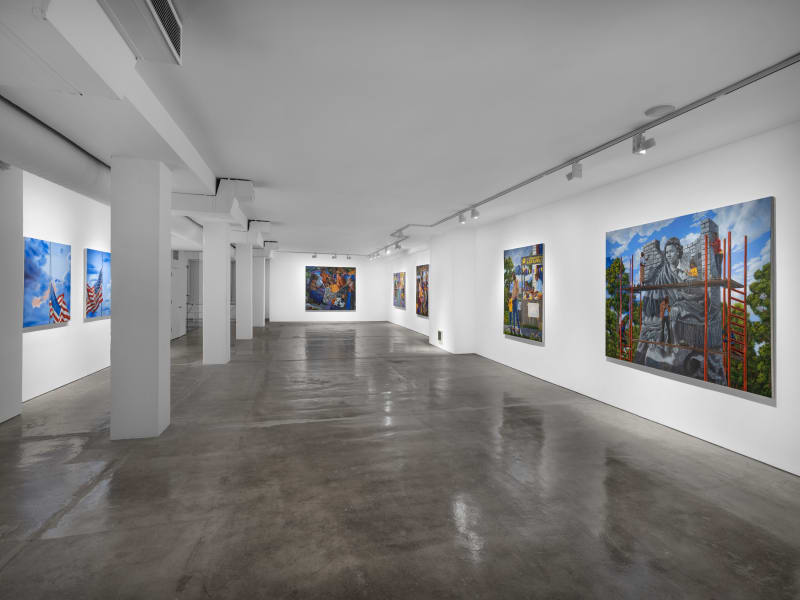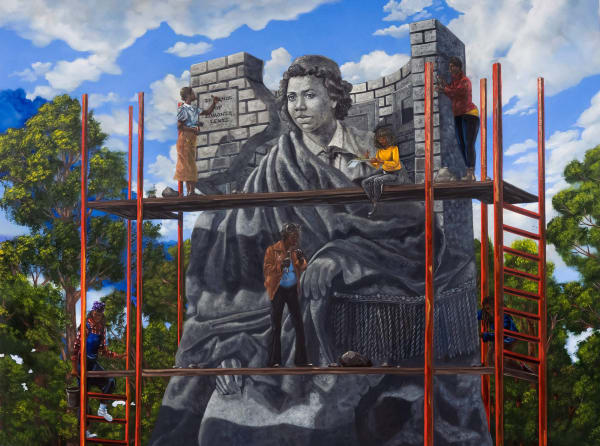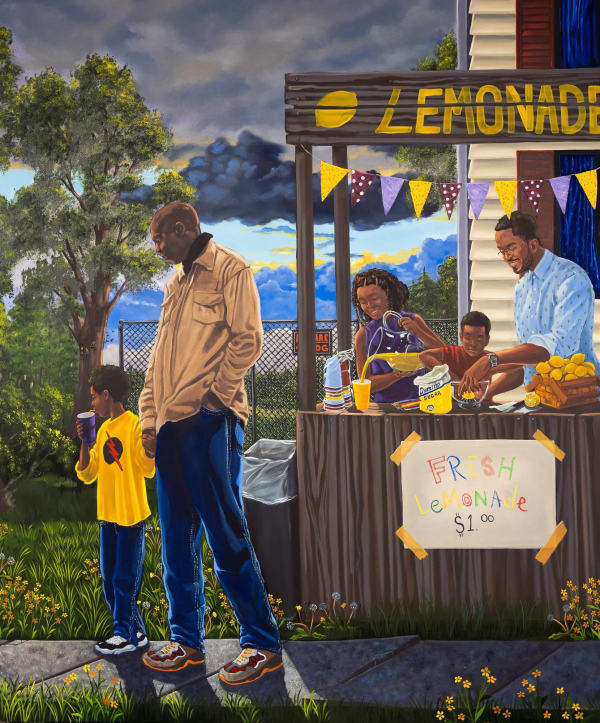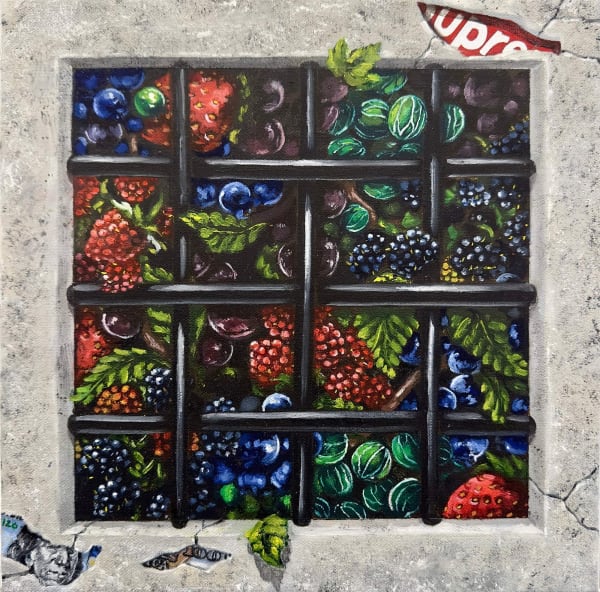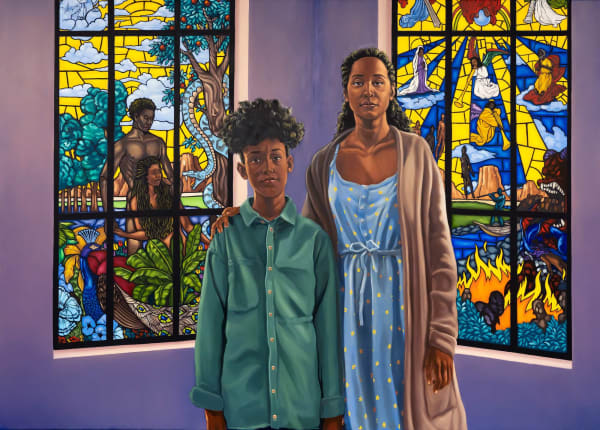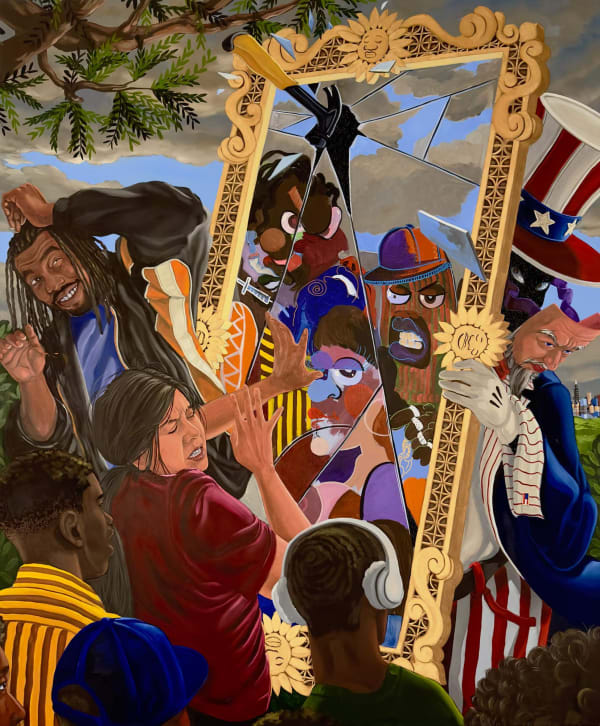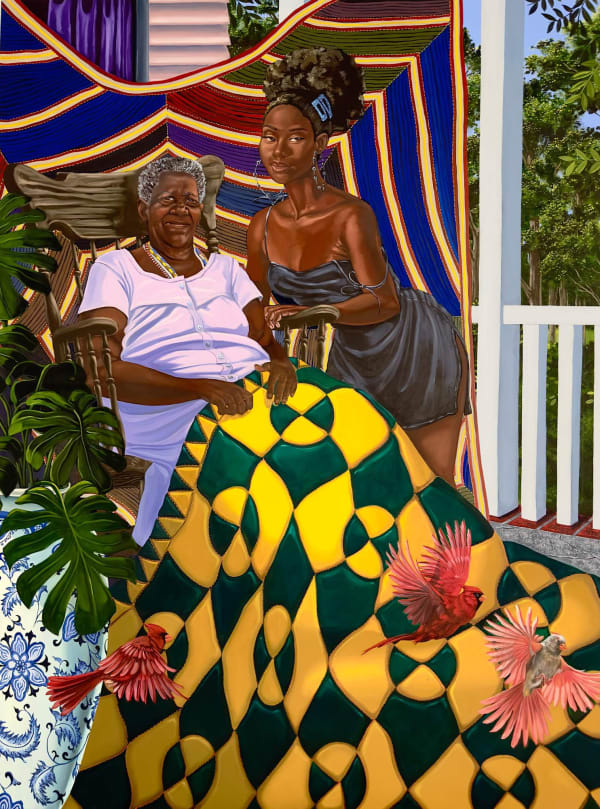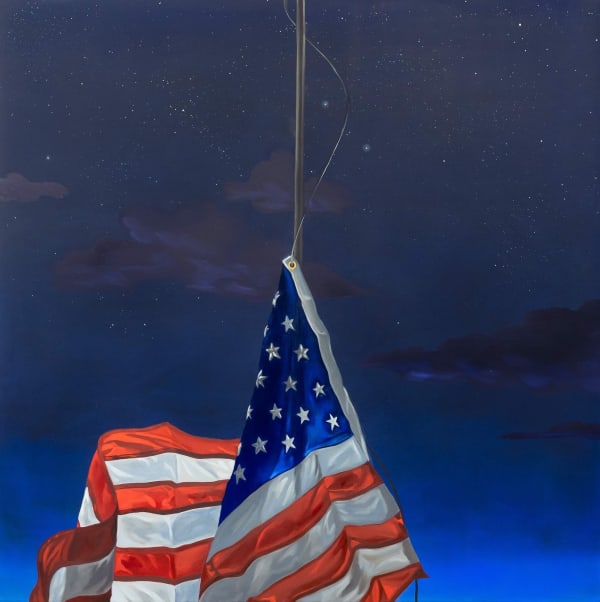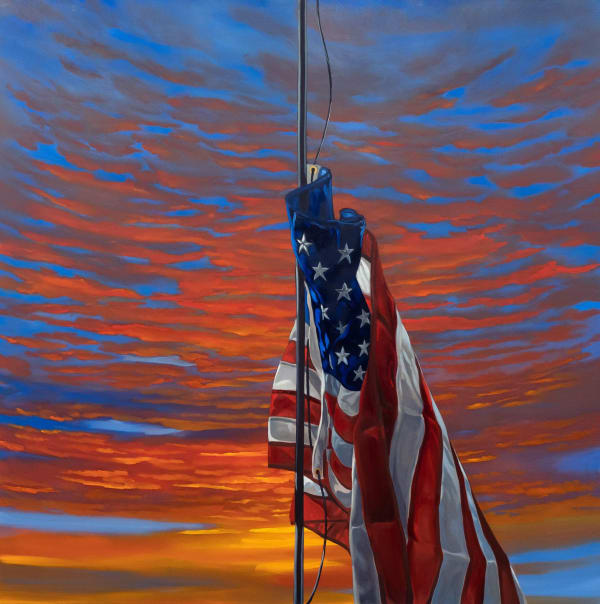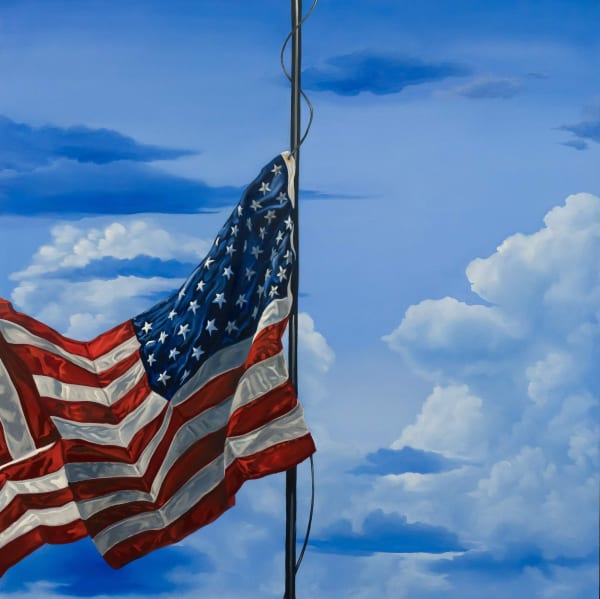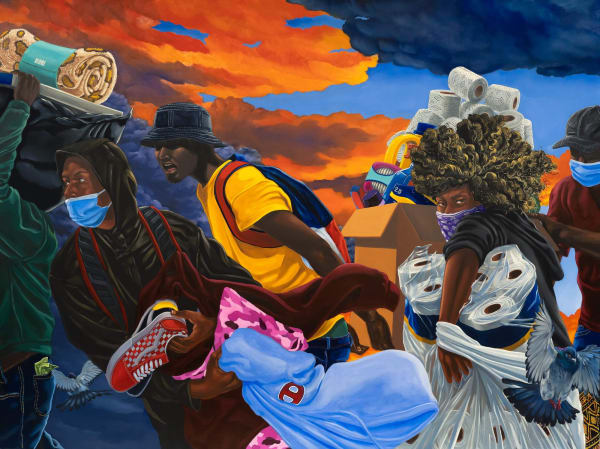All Berries Considered: Terron Cooper Sorrells
Terron Cooper Sorrells (b. 1994) creates art that he believes needs to exist. His large works are immersive in nature, enveloping the viewer such that they feel as though they’re part of the image. Each painting brings up themes like setting and time: examining where the viewer is in life today, and probing how this might relate to the subjects on the canvas. Captivated by narrative storytelling, the artist notes a need for harmony, describing himself as a “compositional perfectionist.”
This compositional perfectionism is apparent in Sorrells’s upcoming solo exhibition, on view at Richard Beavers Gallery from February 3 through March 18, 2023. Tentatively called Apple by the Roots—a play on words of the proverbial apple not falling far from the tree—the 12-work show examines daily life in the Black community, with a focus on concepts like family and the act of building. Viewers might be caught off guard, the artist warns, as his works have evolved into something more reflective than his early prints and paintings. The large-scale oil paintings in Apple by the Roots force the viewer to look inward—to consider that which they inherit. Frustration within the Black community is apparent, but the works are more nuanced than that. Sorrells, who earned his BFA from the Maryland Institute College of Art (MICA) in 2016, also cites the effects of social media as inspiration for the show, stating that he set out to explore how quickly things can spiral into chaos. Viewers might consider Rite-raid (2022), a large-scale work that investigates the mayhem at the onset of the COVID-19 pandemic. A play on the pharmacy brand name Rite Aid and the word “raid,” the work features five subjects carrying boxes of essentials like toilet paper, detergent, and a blanket. Notably, they aren’t looting electronics or other valuables; they are simply taking what they need—but what are the implications of taking hoards of items the general public so desperately requires? What does this so-called raid mean for the Black subjects featured on the canvas, only three of whom wear face masks? Through the work, Sorrells asks questions such as: What is this person going through? How much does he have in his pocket? What does it feel like to steal from one’s brothers and sisters?
Most of Sorrells’s paintings take place in Virginia; some are set in Chicago, and the vast majority depict an urban area. In Rite-raid, there is no identifiable location, as similar situations erupted nationwide, and Sorrells likes his viewers to place themselves directly in his work. A pigeon bursts into flight in the bottom left-hand quadrant of the canvas, and a backdrop of fiery sky— orange and purple with a hint of blue—issues a warning of sorts. The artist speaks at length about his subjects: the three men donning masks in Rite-raid, what this means about their personality, and the person who is wearing a hat and yelling, mouth agape, mask-free. The work ponders what it means to be an outlier, and what it means to listen to or ultimately defy authority.
Rich Dad, Poor Dad (2023) shows a smiling Black father and his two joyous children hard at work behind the counter of a lemonade stand, while a Black father-son duo stand facing the other way, stoic and still, the child drinking from a cup. The title pays homage to the 1997 bestseller written by Robert T. Kiyosaki and Sharon Lechter, a work of nonfiction emphasizing the value of financial literacy. Sorrells’s painting is a play on that, but the artist takes this duality a step further; he asks the viewer to consider what it means that one father is the consumer and the other the person profiting from the exchange. Which dad is the so-called “rich” one? Is it the entrepreneur teaching his children about money, or might it be the father who is supporting Black businesses and embodying thoughtful consumerism? The viewer lingers here, taking in the lush green trees and the cloudy multihued sky, processing the complex dynamics at play.
While There is Time (2023) displays the contrast between the modern and the traditional. Going deeper, the work dissects what it means to be with family who might not have much time left. What can we learn from our elders? The painting shows an elderly woman seated on her porch, a vibrant green and yellow quilt draped across her lap, while another quilt hangs tapestry-style behind her. This older woman is traditional and southern, grandmotherly and pleased with where she is in life. A much younger woman poses beside her, kneeling down as if for a photo, eager to document the scene. The latter’s black dress is a nod to art history; one strap has fallen off her shoulder, a nod to John Singer Sargent’s Madame X (1884), a controversial work that Singer was forced to repaint because the fallen dress strap caused such a stir. Aging and togetherness in Black America take center-stage in While There is Time; the artist acknowledges that the cardinals gathering on the porch, and the woodland in the background, are reminiscent of his native Virginia.
Most of the works are founded in family, and Blind Faith (2023) is no exception. Religious undertones permeate the work, which shows a mother and child facing the viewer, standing inside a church surrounded by painting materials and stained glass windows. On the one hand, the painting celebrates single motherhood; on the other, it puts the church center-stage, exploring the impact of religion or lack thereof in a person’s life. The stained-glass panel on the left depicts a Black Adam and Eve awaiting the last judgment, a rich verdant scene unfolding around them.
Viewers will note that the themes of family and togetherness are prevalent throughout the exhibition. Above all else, Sorrells hopes to reinforce that people have to put themselves aside in the name of the greater good. Inspired by Rembrandt, Carvalho, and Kerry James Marshall, time and again Sorrells’s portraits come alive. In Apple by the Roots, Sorrells reinforces the importance of coming together and working toward—or building—something bigger than oneself.
